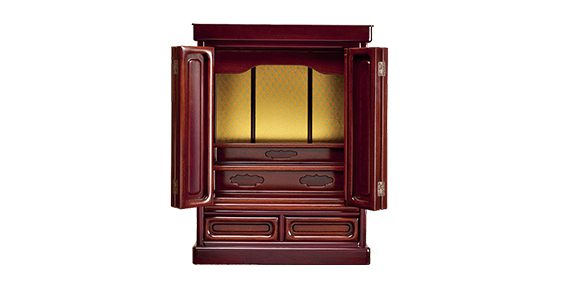Tokyo Butsudan
Buddhist Alters

It is said that at the beginning, in Edo era Genroku period, a joiner made a little ornamental family Buddhist altar using an original technological technique with a mulberry, a zelkova tree and hardwood timber such as cypress. After that, in 1745 during the time of Shogun Yoshimune, the rule of Asakusa temple town were transferred from a commissioner of shrines and temples to a town person. As a result, Buddhist Temples flourished, and even general merchants peddled and requested family Buddhist altar fittings, and craftsmen such as joiners and sculptors concentrated on the production of the altar.
In addition, Tang wood (ebony, rosewood, etc.) indispensable to the Tokyo Buddhist altar has been used from around 1840. Tokyo Buddhist altar, while taking advantage of the beauty of the Tang wood original flavor and grain, have a reputation as a robust and simple altar representing the Edo temperament.